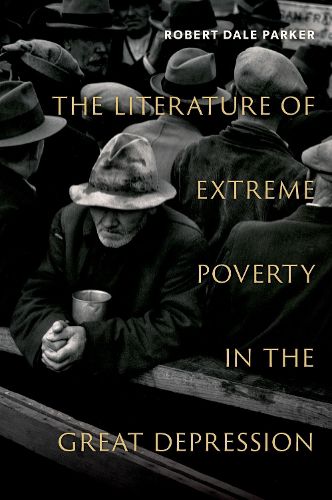Readings Newsletter
Become a Readings Member to make your shopping experience even easier.
Sign in or sign up for free!
You’re not far away from qualifying for FREE standard shipping within Australia
You’ve qualified for FREE standard shipping within Australia
The cart is loading…






The Literature of Extreme Poverty in the Great Depression uncovers a forgotten side of modernism: the literature of unemployment and poverty in the 1930s, particularly fiction and poetry about people starving on the street or struggling on welfare, people who often don't know where they'll find their next meal or whether they'll find someplace to sleep. They spend the night on park benches or in filthy flophouses, or they trade sex for food and shelter, or they starve. Time itself changes. For the starving poor standing for hours and hours in a breadline, the speed of modern culture slows down. Parker expands on previous studies of the 1930s by recovering the fiction and poetry of dozens of forgotten writers and reading them together with political cartoons and with underknown writing by such acclaimed or understudied writers as Langston Hughes, Tom Kromer, Dorothy West, and Martha Gellhorn. From an age so immersed in despair and suffering that many writers came to doubt the very idea of literary aesthetics, this book rescues a vast archive of literary analogues to the famous documentary photographs that burned the Depression into American visual memory. It shapes a collective portrait and interpretation of a nearly lost literary history that represents a nation, its crisis, and its literature of crisis from the bottom up rather than from the top down.
$9.00 standard shipping within Australia
FREE standard shipping within Australia for orders over $100.00
Express & International shipping calculated at checkout
The Literature of Extreme Poverty in the Great Depression uncovers a forgotten side of modernism: the literature of unemployment and poverty in the 1930s, particularly fiction and poetry about people starving on the street or struggling on welfare, people who often don't know where they'll find their next meal or whether they'll find someplace to sleep. They spend the night on park benches or in filthy flophouses, or they trade sex for food and shelter, or they starve. Time itself changes. For the starving poor standing for hours and hours in a breadline, the speed of modern culture slows down. Parker expands on previous studies of the 1930s by recovering the fiction and poetry of dozens of forgotten writers and reading them together with political cartoons and with underknown writing by such acclaimed or understudied writers as Langston Hughes, Tom Kromer, Dorothy West, and Martha Gellhorn. From an age so immersed in despair and suffering that many writers came to doubt the very idea of literary aesthetics, this book rescues a vast archive of literary analogues to the famous documentary photographs that burned the Depression into American visual memory. It shapes a collective portrait and interpretation of a nearly lost literary history that represents a nation, its crisis, and its literature of crisis from the bottom up rather than from the top down.